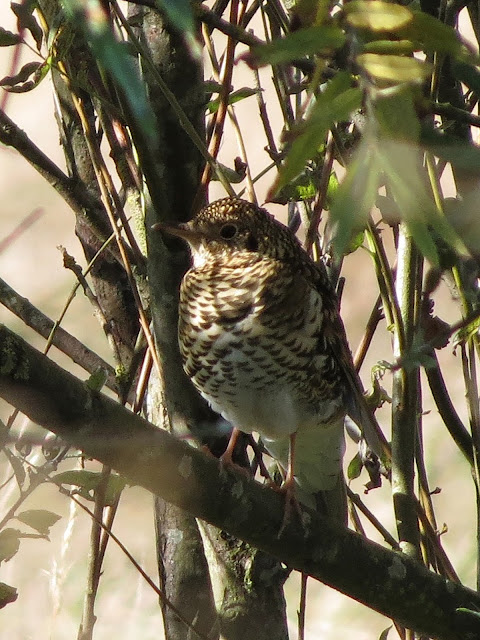White's Thrush, Lindisfarne, Northumberland - Wednesday 5th October 2016
Having missed a couple of these by leaving Shetland a day early in previous years, and armed with the knowledge that mainland White's Thrushes tend to make only brief visits, when the news broke at 09:20 I was eager to get up the coast to see it ASAP.
The Holy Island of Lindisfarne is reached via a causeway, which is covered by the hide tide twice a day. I needed to get up there, see the bird, and get off before 16:05 when the causeway was due to close, otherwise I'd have an uncomfortable night stuck in the car...
Well, I made it, and was rewarded with fabulous views of this beautiful bird. It was sat low down in some willows beside Straight Lonnen (a north-south path on the island), occasionally dropping out of sight, or making a quick short flight around the tree,
White's Thrush, Lindisfarne, Northumberland - Wednesday 5th October 2016
It was a large, bulky thrush, with a long bill and long tail, giving it an elongated appearance. Most of the bird's plumage were covered in varying degrees with spots and crescents, while the belly, vent, and under tail coverts were a pure white (with some ermine-like flecks under the tail). The eye was large and very dark, contrasting against thick pale eye ring. There was a black spot on the plumage behind the eye.
White's Thrush notes, Lindisfarne, Northumberland - Wednesday 5th October 2016
In the warm Autumn sun, the bird had a soft golden glow, speckled with blacks, browns and whites, not unlike the massed Golden Plovers in the field on the other side of the track. Here's some video (it wasn't easy to get a good position to film from) that gives an impression of the scene.
A wonderful bird, again in a wonderful location. And (Western Swamphen awaiting acceptance) not a bad bird for my 400th species in Britain ;-)




No comments:
Post a Comment